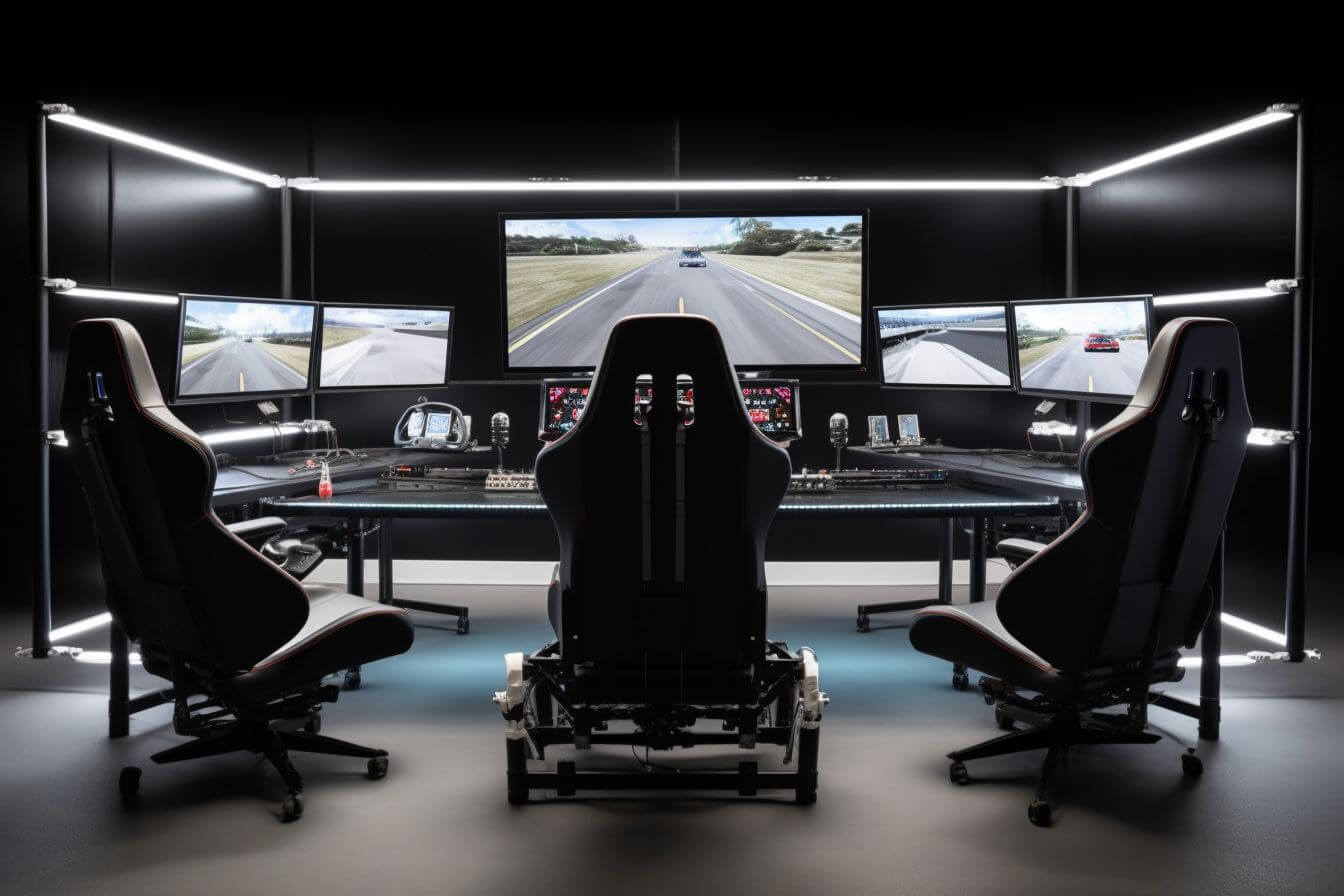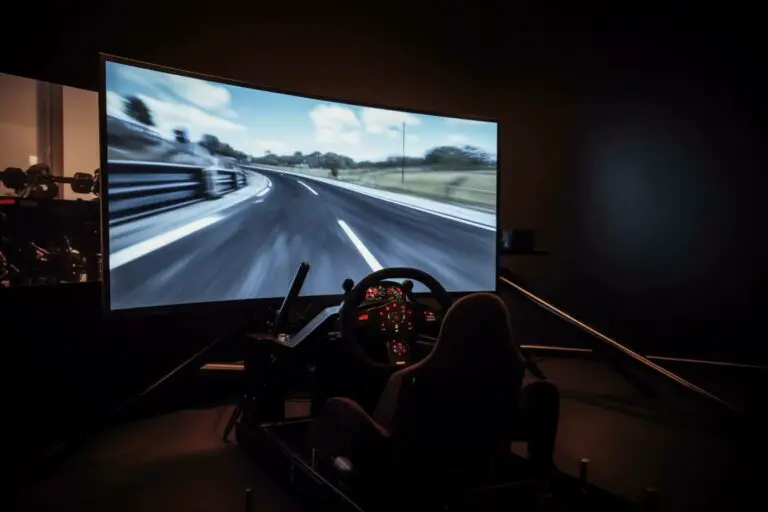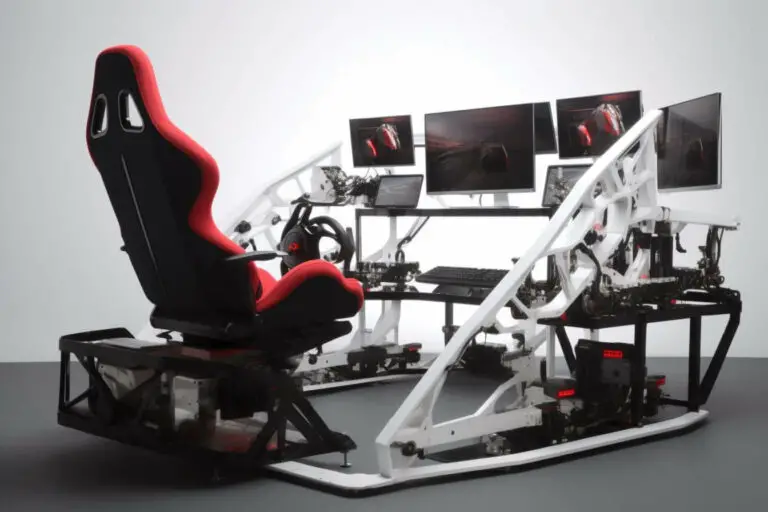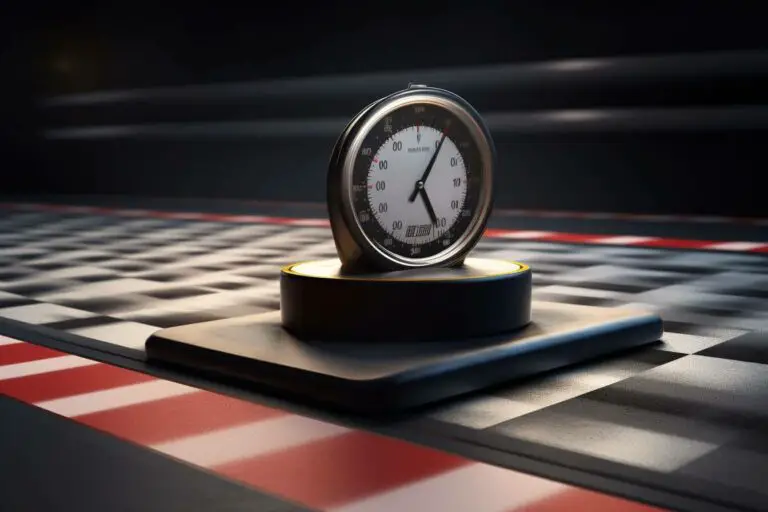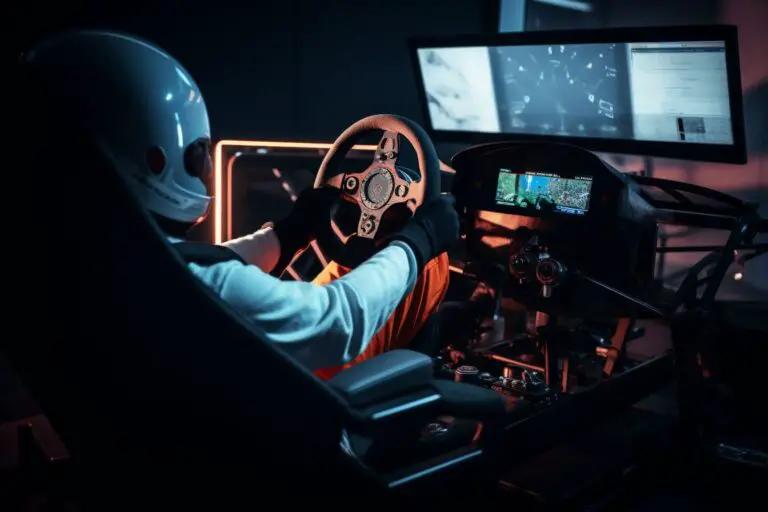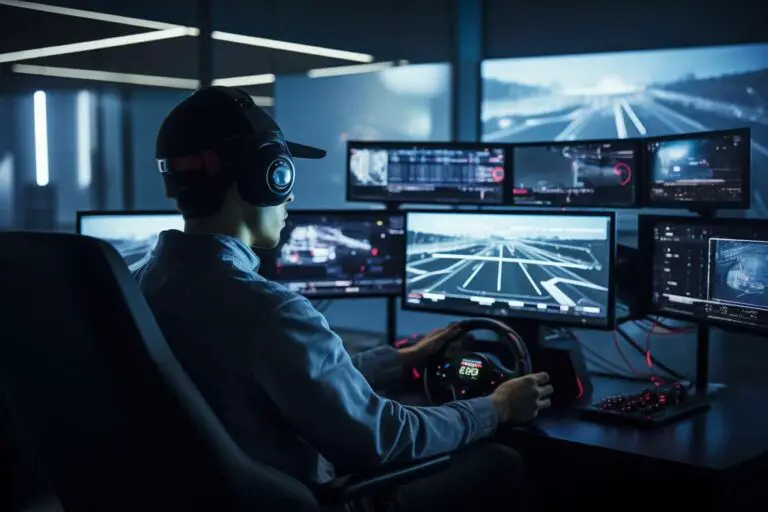How Can I Optimize My Car Setup For Faster Lap Times In Sim Racing?
- How Can I Optimize My Car Setup For Faster Lap Times In Sim Racing?
- Understanding Vehicle Dynamics In Sim Racing
- Adjusting Tire Pressures For Optimal Grip
- Fine-Tuning Suspension Settings
- Balancing Aerodynamics For Improved Handling
- Optimizing Gear Ratios For Maximum Speed
- Managing Brake Bias For Efficient Braking
- Utilizing Vehicle Telemetry For Data-Driven Improvements
- Frequently Asked Questions
- How Do I Choose The Right Car And Track Combination To Optimize My Lap Times In Sim Racing?
- What Are Some Common Driving Techniques That Can Help Me Achieve Faster Lap Times In Sim Racing?
- How Can I Maintain Optimal Tire Temperatures Throughout A Race To Ensure Consistent Performance?
- Are There Any Specific Sim Racing Hardware, Such As Steering Wheels Or Pedals, That Can Improve My Car Setup And Overall Performance?
- How Do I Effectively Practice And Improve My Driving Skills To Make The Most Of My Optimized Car Setup In Sim Racing?
- Conclusion
Are you tired of constantly losing ground to your rivals in sim racing? Do you feel like there’s just that extra bit of speed you can’t seem to tap into, no matter how hard you push yourself and your virtual car? Fear not – optimizing your car setup could be the key difference between finishing first or settling for a spot further down the grid.
In this article, we’ll explore some crucial tips and tricks to help you fine-tune your vehicle and shave those precious seconds off your lap times.
We all know practice makes perfect, but sometimes it’s just not enough. That’s where getting under the hood (or screen) and tweaking various settings can come into play.
Whether it’s adjusting tire pressures, tweaking suspension settings, or finding the right aerodynamic balance, making these changes can unlock the hidden potential within your car. So let’s dive in and discover how you can leave your competition-eating dust on every straight and corner!
Other Interesting Articles to improve your Sim Racing Techniques
How To Improve Your Sim Racing Lap Times: Shave Seconds Off Your Lap Time
What Are the Top Techniques to Master Corners in Sim Racing?
Discover the Insider Tips for Smoother Braking and Acceleration in Sim Racing
Which Driving Aids Can Help You Become a Faster Sim Racer?
How to Consistently Hit the Perfect Racing Line for Ultimate Speed
What Can You Learn from Pro Sim Racers to Boost Your Performance?
Uncover the Mental Strategies to Stay Focused and Improve Your Sim Racing Skills
How to Analyze Telemetry Data to Unlock Your Full Sim Racing Potential
How to Train Your Way to Sim Racing Greatness: Tips, Tricks, and Techniques
Understanding Vehicle Dynamics In Sim Racing
To optimize your car setup for faster lap times in sim racing, it’s crucial to have a solid understanding of vehicle dynamics. Vehicle dynamics refers to the various forces and motions that affect a car as it moves on the track. These include factors such as weight distribution, suspension settings, tire grip, aerodynamics, and power delivery. By gaining a deeper knowledge of these elements, you’ll be better equipped to make adjustments to your virtual race car and unlock its full potential.
One key aspect of vehicle dynamics is weight transfer. When accelerating, braking or cornering, the weight of the car shifts from one area to another. This can significantly impact how much traction each tire has with the road surface.
For example, during hard braking, more weight transfers to the front wheels while less remains at the rear wheels which could cause understeer if not addressed properly through proper brake balance adjustment or suspension tuning.
Another important factor worth considering when optimizing your sim racing setup is tire management. Ensuring optimal tire pressure and temperature will help maximize grip levels throughout a race stint. Additionally, managing tire wear effectively by choosing appropriate camber angles and toe settings can also lead to improved handling characteristics over time.
As you gain experience in sim racing and familiarize yourself with different tracks’ nuances and conditions, you’ll develop an intuition for making data-driven decisions about what changes are necessary for achieving those coveted fast lap times.
Adjusting Tire Pressures For Optimal Grip
One of the key aspects to consider when optimizing your car setup for faster lap times in sim racing is adjusting tire pressures. Properly managing tire pressures not only improves grip but also enhances cornering and braking capabilities. It’s essential to experiment with different pressure settings and find a balance that caters to your driving style, as well as the specific track conditions.
Begin by monitoring the temperatures across each tire’s surface during practice laps. You’ll want to aim for even temperature distribution, which indicates optimal contact patch and thus better grip. If you notice higher temperatures on the outer edges, try increasing the tire pressure slightly; conversely, if inner-edge temperatures are higher, decrease it. Keep making small adjustments until you achieve an ideal balance.
It’s important to note that tire pressures will change dynamically throughout a race due to factors such as fuel load, track temperature variations, and wear-and-tear on tires themselves. As a result, don’t shy away from tweaking your settings mid-race should you feel performance slipping or observe uneven tire wear patterns.
By focusing on fine-tuning your tire pressures, you’ll be one step closer to achieving those elusive fast lap times in sim racing.
Fine-Tuning Suspension Settings
Ah, suspension settings – the dark art of sim racing setup. The realm where many a brave racer has ventured and returned with their tail between their legs, wondering why they can’t seem to crack the secrets hidden within those seemingly innocent numbers. But worry not, fellow speed enthusiast! With a little guidance and patience, you too will be able to delve into that arcane world and emerge victorious.
Let’s start by understanding what these cryptic values represent. First up is the spring rate, which determines how stiff or soft your car’s springs are. A higher number means a stiffer spring and vice versa. Stiff springs generally make for better responsiveness but at the cost of reduced grip over uneven surfaces. So it’s all about finding that sweet spot where your car feels agile without sacrificing traction on bumpy tracks like Sebring or Nürburgring.
Next comes damping, split into rebound (how quickly your suspension returns after being compressed) and bump (how much resistance there is when compressing). These two variables affect how well the car copes with bumps in general and how stable it remains under braking and acceleration respectively.
Once you’ve familiarized yourself with those concepts, it’s time to get hands-on and experiment with different setups based on track conditions and driving style preferences. For instance, if you find that your car tends to understeer through fast corners, try reducing front spring stiffness while keeping rear stiffness relatively unchanged; this should help increase front-end grip without compromising overall stability too much. Similarly, adjusting rebound and bump damping can help fine-tune how composed your vehicle remains over kerbs or during hard accelerations out of slow turns – just remember that every change you make may have knock-on effects elsewhere in the handling balance so always test extensively before settling on any particular configuration.
And soon enough, my friend, you’ll be leaving others behind as you glide effortlessly around each twisty circuit like some sort of celestial sim racing deity.
Balancing Aerodynamics For Improved Handling
A crucial aspect of optimizing your car setup for faster lap times in sim racing is striking the right balance between aerodynamics and handling. Achieving this harmony requires a thorough understanding of how downforce, drag, and other factors influence your car’s performance on various tracks. When you successfully combine these elements, you’ll experience improved grip, stability, and cornering speed – all vital components for shaving valuable seconds off your lap times.
To evoke emotions in your audience while discussing aerodynamics and handling, consider incorporating the following aspects:
- The thrill of mastering high-speed corners: Highlight the excitement that comes with nailing those challenging turns as you find the perfect balance between downforce and reduced drag.
- The satisfaction of outperforming opponents: Emphasize the competitive advantage gained by fine-tuning your vehicle’s aerodynamic profile to suit different track conditions.
- The joy of continuous improvement: Delve into the emotional payoff that accompanies each incremental gain resulting from constant experimentation and learning.
- The pride in overcoming adversity: Share personal anecdotes or stories about racers who have faced setbacks but persevered to achieve their goals through dedication to their craft.
Optimizing aerodynamics for improved handling isn’t just about better lap times; it’s also an emotionally rewarding journey filled with exhilarating highs and educational lows.
As you develop a deeper comprehension of how every tweak impacts your vehicle’s performance around the circuit, you’ll grow not only as a sim racer but also as an individual passionate about pursuing excellence in this thrilling virtual sport.
So go ahead – chase those fast laps while embracing the unique challenges that come with unlocking new levels of skill and mastery!
Optimizing Gear Ratios For Maximum Speed
One of the most critical aspects of achieving faster lap times in sim racing is optimizing gear ratios. The ideal gear ratios will vary depending on the specific track and car being used, so it’s crucial to experiment with different settings until you find what works best for your particular scenario.
By adjusting these ratios, you’ll be able to maximize acceleration out of corners while maintaining top speed on straights. To begin optimizing your gear ratios, pay attention to how your revs change as you shift gears during a race. You want to ensure that each upshift drops the RPM into the optimal power band where torque output is highest.
This means shortening or lengthening individual gears based on whether you’re experiencing excessive wheel spin or bogging down after an upshift. It may take some trial and error, but once you’ve found a balance that allows for strong acceleration throughout all gears, you should notice an improvement in overall lap times.
Another key factor when setting up gear ratios is considering the unique characteristics of each track. For tracks with tight turns followed by long straightaways, such as Monza or Silverstone, a shorter final drive ratio might be beneficial – this will help provide quick acceleration out of slow corners without sacrificing too much top-end speed on those lengthy straights.
Conversely, circuits characterized by high-speed corners like Spa-Francorchamps could benefit from taller gearing since carrying higher speeds through fast bends becomes more important than outright acceleration off slower ones. By tailoring your setup specifically for each circuit type, not only will your performance improve across various tracks but also give you valuable experience adapting setups as needed for future races.
Managing Brake Bias For Efficient Braking
So you’ve conquered the world of gear ratios and unlocked untold speed, but there’s still one crucial element that needs mastering: brake bias. This often overlooked aspect can make or break your race performance, quite literally!
Imagine a symphony orchestra where every musician plays their part to perfection – except for the percussionist who just can’t seem to get it right. That’s what an unoptimized brake bias feels like in the midst of a heated sim racing battle.
Now let us dive into managing brake bias for efficient braking. Brake bias refers to the distribution of braking force between front and rear brakes. An ideal brake balance ensures optimal stability and control during deceleration, minimizing understeer or oversteer scenarios which could lead to lost time on track or even worse – contact with barriers or other cars.
To adjust this setting, most simulators allow changing the percentage value allocated towards either end of your vehicle; higher values indicate more emphasis on front brakes while lower ones shift focus towards rear brakes.
It is essential not to underestimate the power of experimenting with different brake biases tailored specifically for each car and track combination within your simulator. Don’t be afraid to try various settings until you find that sweet spot – remember, practice makes perfect!
It’s also important to consider factors such as tire wear, fuel load changes throughout a race stint, and any damage sustained by your car when adjusting these parameters. By honing in on finding an optimized brake bias setup for each situation you encounter in sim racing, rest assured that those lap times will tumble down faster than ever before!
Utilizing Vehicle Telemetry For Data-Driven Improvements
One of the most effective methods to optimize your car setup for faster lap times in sim racing is utilizing vehicle telemetry. Vehicle telemetry provides a wealth of data-driven insights into your driving performance, allowing you to identify areas where improvements can be made.
By analyzing this information, you’ll be able to fine-tune various aspects of your car’s settings and behavior on the track, leading to more consistent and faster lap times.
There are several key pieces of data that should be examined when using vehicle telemetry:
- Throttle and brake inputs:
- Analyzing how smoothly and consistently you’re applying throttle and brakes
- Identifying any areas where you may be over or under-utilizing these inputs
- Suspension settings:
- Monitoring weight transfer throughout corners
- Determining if adjustments need to be made to improve balance and grip
Additionally, looking at tire temperatures across all four tires can help identify potential issues with camber or tire pressures. Comparing sector times between different laps will reveal inconsistencies in driving lines or areas where time could potentially be gained.
By focusing on these specific elements provided through vehicle telemetry, it becomes possible to make well-informed decisions about which changes will have the biggest impact on overall lap times.
Remember that practice makes perfect; as you continue collecting data from your sessions and making incremental adjustments based on those findings, your consistency and speed around the track are bound to improve significantly. The key is patience combined with a willingness to experiment with various setups until finding one that best suits both your driving style and the demands of each specific circuit.
Frequently Asked Questions
How Do I Choose The Right Car And Track Combination To Optimize My Lap Times In Sim Racing?
Choosing the right car and track combination in sim racing is like finding the perfect dance partner for a harmonious performance.
To optimize your lap times, it’s essential to select a vehicle with characteristics that suit your driving style and complement the specific demands of the chosen circuit.
Experimenting with different cars on various tracks will help you identify which combinations allow you to maintain control, balance, and speed throughout each lap.
Additionally, familiarizing yourself with both the strengths and weaknesses of certain vehicles can enable you to exploit their full potential when tackling challenging corners or overtaking opponents.
So, take time to test out diverse pairings in order to discover the ideal match that unlocks faster lap times!
What Are Some Common Driving Techniques That Can Help Me Achieve Faster Lap Times In Sim Racing?
Some common driving techniques to achieve faster lap times in sim racing include:
- Smooth steering and throttle control
- Proper braking technique
- Utilizing the racing line
- Trail braking
- Effective weight transfer management
Smooth inputs with both steering and throttle help maintain traction and stability, while proper braking involves applying maximum pressure initially and gradually easing off as you approach a turn. Following the optimal racing line allows for efficient cornering, carrying more speed through turns. Trail braking helps rotate the car into corners by maintaining some brake pressure while turning, and managing weight transfer ensures that your car remains balanced during acceleration, deceleration, and cornering.
These techniques combined can lead to improved consistency on track and ultimately result in faster lap times.
How Can I Maintain Optimal Tire Temperatures Throughout A Race To Ensure Consistent Performance?
Just as a master chef knows the importance of maintaining the perfect temperature for their culinary creations, sim racers must also pay close attention to tire temperatures to ensure consistent performance throughout a race.
To maintain optimal tire temperatures, it’s essential to focus on your car setup and driving style. Adjusting suspension settings such as camber and tire pressure can help distribute heat evenly across the tires’ contact patch.
Additionally, managing your driving aggression plays a pivotal role in preventing excessive overheating or uneven wear; smooth braking, steering inputs, and gradual acceleration are key elements in preserving ideal tire conditions.
By carefully balancing these factors, you’ll be well-equipped to tackle each lap with precision and confidence just like a maestro conducting their symphony.
Are There Any Specific Sim Racing Hardware, Such As Steering Wheels Or Pedals, That Can Improve My Car Setup And Overall Performance?
Investing in high-quality sim racing hardware, such as steering wheels and pedals, can indeed improve your overall performance and car setup.
Premium equipment often provides better precision, feedback, and adjustability compared to standard gear. This allows you to fine-tune your inputs more accurately, resulting in a smoother driving experience and potentially faster lap times.
Top brands like Fanatec, Thrustmaster, and Logitech offer various options catering to different budgets and preferences. Ultimately, choosing the right hardware for your needs will help enhance your immersion while enabling you to optimize your car’s settings effectively.
How Do I Effectively Practice And Improve My Driving Skills To Make The Most Of My Optimized Car Setup In Sim Racing?
To effectively practice and improve your driving skills in sim racing, it’s crucial to consistently invest time and effort into mastering various techniques that complement your optimized car setup.
Begin by focusing on learning the tracks thoroughly, understanding braking points, turn-in spots, and corner exit strategies while fine-tuning your steering inputs and throttle control.
Utilize telemetry data to analyze your performance, identify areas for improvement, and experiment with different approaches.
Joining online communities or participating in leagues can provide valuable feedback from fellow racers as well as opportunities to challenge yourself against competitive opponents.
Ultimately, patience and persistence are key factors in enhancing your sim racing abilities and making the most of your customized car setup.
Conclusion
In conclusion, optimizing your car setup and driving techniques can significantly improve your sim racing performance. Remember that even professional real-life racers invest time in perfecting their setups and mastering the art of sim racing.
As a fun fact, F1 drivers like Lando Norris and Max Verstappen have been known to compete in online sim races during their free time.
So don’t be disheartened if you’re not hitting those top lap times just yet – keep practicing with dedication and focus, and you’ll soon see improvements on the virtual track.
We believe in you!

